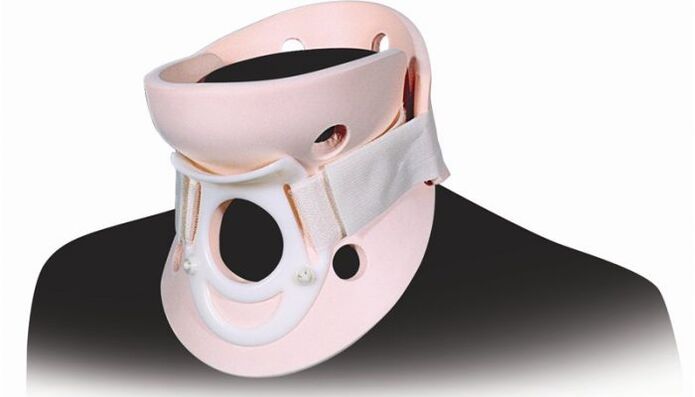cervical osteochondrosis

- Defects are formed under the influence of damaging factors.
- The soft core of the disc penetrates it - forming the herniation of the disc.
- As the process progresses, part of the nucleus pulposus becomes detached - forming a herniated disc.
All of these processes involve inflammation of surrounding tissue. First, a reflex pain syndrome occurs, and then a compression syndrome occurs - the nerve root is compressed by the hernia.
Treatment programs
- Exposure to drugs.
- Orthopedic products.
- physiotherapy.
- Physical therapy, massage, manual therapy.
- Spine surgery.
- Radiofrequency ablation.
medical treatement

- NSAIDs – eliminate inflammation.
- Muscle relaxants – prevent reflex muscle spasms.
- Topical analgesics – relieve pain.
- Vascular drugs - used for cervical osteochondrosis combined with vertebral artery syndrome.
- Glucocorticoids - These hormonal drugs have significant anti-inflammatory effects.
Therefore, among all drugs, only timely administration of chondroprotective agents can help get rid of cervical osteochondrosis.
Orthopedic products

- Corsets and collars have a compression effect – they put pressure on certain parts of the spine. This prevents the appearance of protrusions and hernias, that is, the formation of complications.
- Orthopedic devices always separate the vertebrae from each other in a vertical plane. This helps relieve pressure on the nerve roots and the disc itself.
- If protrusions or degenerative changes are present, a corset will not help eliminate them. However, if used regularly, this therapy helps not to remember the manifestations of the disease.
The listed properties should be considered not only by the doctor, but also by the patient, in order to avoid having too high expectations about the use of the bandage.
physiotherapy

- Exercise can help relieve pain, reflex muscle spasms, and compression of the vertebral arteries and other blood vessels. This means that with regular exercise, the need for symptomatic treatment can be reduced.
- Exercises help form the muscle bundles in your cervical spine. Well-trained muscles maintain internal structures, including bone and cartilage, and prevent protrusions from forming.
- Degenerative changes in the intervertebral disc occur under the influence of excessive, incorrectly applied loads, or deficiencies. Proper exercise prevents degenerative processes and activates blood flow to the disc area.
Physical therapy and massage

- Electrophoresis and sonoporation help the drug reach the spine.
- Manual therapy can relax muscles after prolonged exercise.
- Acupuncture and electromyostimulation combined with exercise therapy can build strong muscle bundles and eliminate pain.
We should also not forget that all physical therapy and massage methods increase local blood flow and thus promote metabolism of damaged tissues. As a result, the degradation process slows down or stops completely.
Surgical treatment

- Discoplasty with palliation. During the operation, all complications of the disease are also eliminated.
- Intervertebral cartilage prosthesis or replacement of the entire vertebral body motion segment with a prosthesis.
radiofrequency ablation

- Special electrodes are applied to the damaged disc through acupuncture.
- The disc is heat treated using electricity.
- The nerves in the area of impact and the disc tissue itself are damaged.
- After ablation, the disc remains between the vertebrae. It does not function as a shock absorber but does not cause pathological symptoms.
In most cases, ablation helps eliminate all symptoms of osteochondrosis, but patients are not immune to damage to other discs caused by this disease.
prevention

- Especially normalizes physical movement of the spine and neck. Do preventive exercise, swimming, skiing. Don't let your neck sit still for long periods of time.
- Eat well and drink well. A balanced diet, free of harmful foods and containing enough protein and calcium, can help prevent this disease.
- Eliminate bad habits that may contribute to the degenerative process. First, it's smoking and regular drinking.
- When sleeping, use orthopedic assistive devices and a well-fitted mattress to avoid extra pressure on your cervical spine.
- If you have a spinal condition or injury, be sure to use orthopedic products.


















